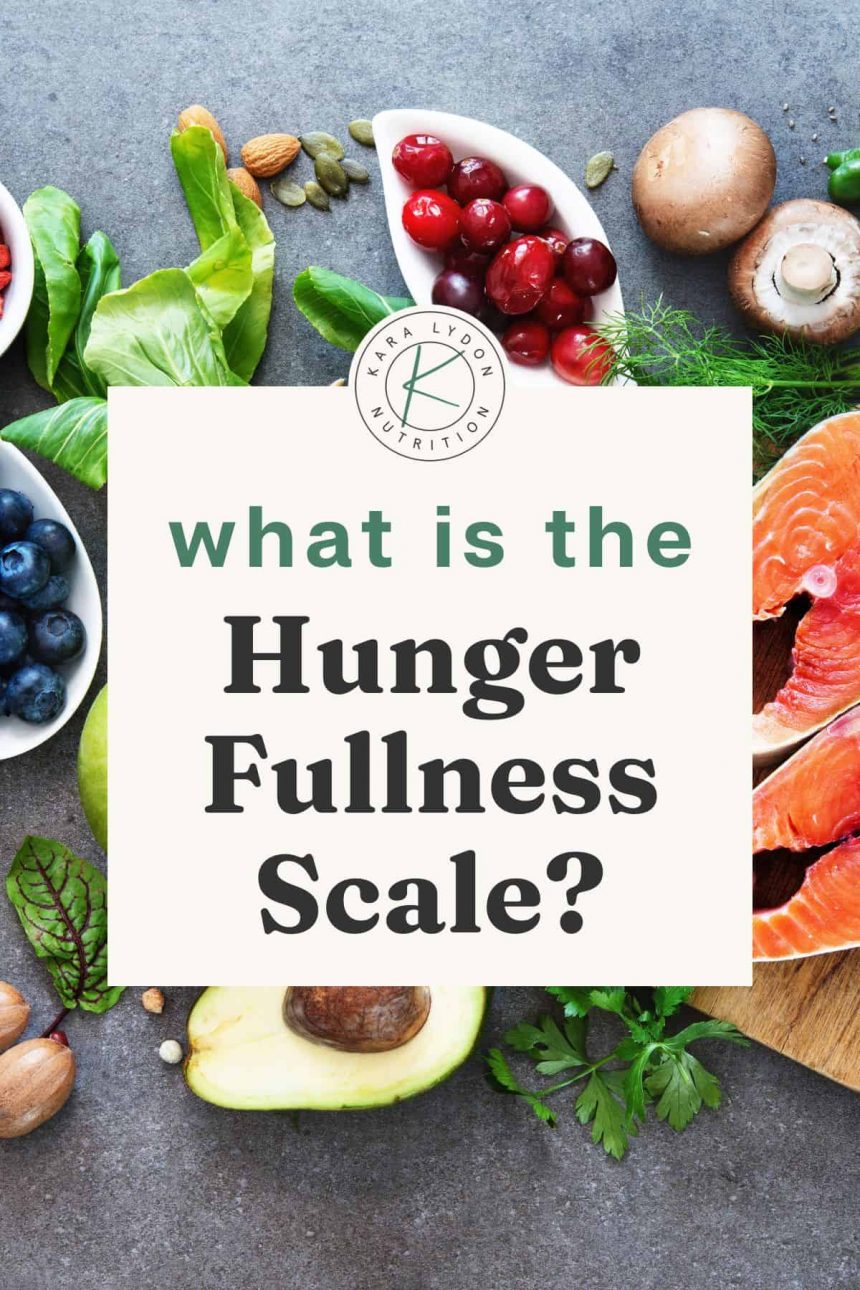Are you struggling to determine how hungry or full you are? Try using the intuitive eating hunger fullness scale as a helpful tool to guide you in determining when and how much to eat. This scale can assist you in practicing two essential principles of intuitive eating – honoring your hunger and respecting your fullness. As a certified intuitive eating counselor, I have found this scale to be beneficial in gauging your level of hunger (when it’s time to eat) and fullness (when it might be time to stop eating).
If you have difficulty listening to your body and identifying your hunger and fullness cues, know that you are not alone. Years of dieting can disconnect you from your body’s signals, making it challenging to recognize when you are truly hungry or full. Diet culture often promotes the belief that hunger is negative, and overrides the importance of listening to your body’s needs. Intuitive eating aims to challenge these harmful beliefs and assists in rebuilding trust in your body.
Understanding Your Hunger Cues:
Hunger manifests itself in various ways beyond stomach growling. Symptoms can include physical sensations such as stomach rumbling, throat/esophagus discomfort, headaches, mood changes, and changes in energy levels. Additionally, there are different types of hunger like taste hunger, emotional hunger, and practical hunger. Understanding these cues can help you identify when your body truly needs nourishment.
Understanding Your Fullness Cues:
Similar to hunger, fullness is experienced differently by everyone. Physical fullness (satiety) and emotional fullness (satisfaction) are equally important to feeling truly full after a meal. Recognizing when you are satiated and satisfied can help you know when to stop eating.
How to Use the Hunger Fullness Scale:
The hunger fullness scale ranges from 1 to 10, with 1-4 indicating degrees of hunger, and 6-10 indicating degrees of fullness. Aim to eat when you’re at a 3 or 4 on the scale and stop eating when you’re around a 7-8. Journaling your hunger and fullness levels before and after meals can help you track patterns and understand your body’s cues better.
Remember, hunger and fullness cues can vary from day to day, so be gentle with yourself and trust your body’s wisdom. The scale is a tool, not a strict rule to follow. If using the scale causes stress or anxiety, take a break and focus on other principles of intuitive eating. Seek support if needed, as you deserve guidance on your journey to intuitive eating.





